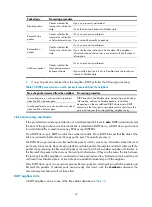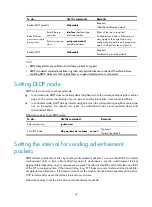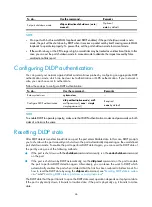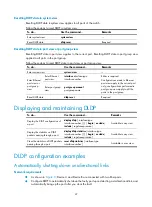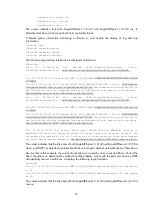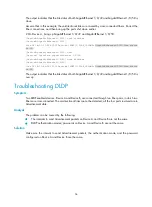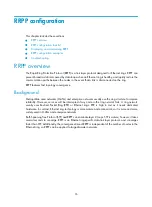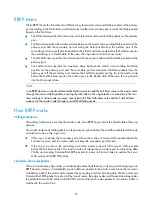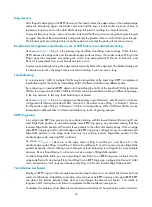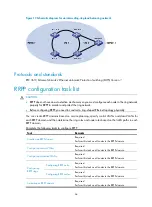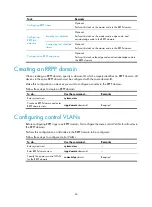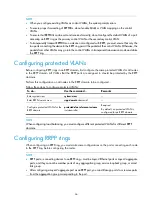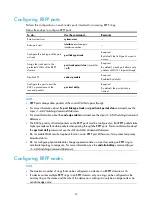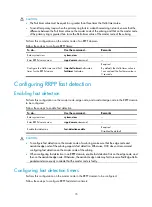
56
Basic concepts in RRPP
Figure 13
RRPP networking diagram
RRPP domain
Interconnected devices with the same domain ID and control VLANs constitute an RRPP domain. An RRPP
domain contains the following elements—primary ring, subring, control VLAN, master node, transit node,
primary port, secondary port, common port, edge port, and so on.
As shown in
, Domain 1 is an RRPP domain, including two RRPP rings: Ring 1 and Ring 2. All
the nodes on the two RRPP rings belong to the RRPP domain.
RRPP ring
A ring-shaped Ethernet topology is called an “RRPP ring”. RRPP rings fall into two types: primary ring and
subring. You can configure a ring as either the primary ring or a subring by specifying its ring level. The
primary ring is of level 0, and a subring is of level 1. An RRPP domain contains one or multiple RRPP rings,
one serving as the primary ring and the others serving as subrings. A ring can be in one of the following
states:
•
Health state—All the physical links on the Ethernet ring are connected
•
Disconnect state—Some physical links on the Ethernet ring are broken
As shown in
, Domain 1 contains two RRPP rings: Ring 1 and Ring 2. The level of Ring 1 is set
to 0, and that of Ring 2 is set to 1. Ring 1 is configured as the primary ring, and Ring 2 is configured as
a subring.
Control VLAN and data VLAN
1.
Control VLAN
In an RRPP domain, a control VLAN is a VLAN dedicated to transferring Rapid Ring Protection Protocol
Data Units (RRPPDUs). On a device, the ports accessing an RRPP ring belong to the control VLANs of the
ring, and only such ports can join the control VLANs.
An RRPP domain is configured with two control VLANs: one primary control VLAN, which is the control
VLAN for the primary ring; one secondary control VLAN, which is the control VLAN for subrings. All
subrings in the same RRPP domain share the same secondary control VLAN. After you specify a VLAN
as the primary control VLAN, the system automatically configures the VLAN whose ID is the primary
control VLAN ID plus one as the secondary control VLAN.

